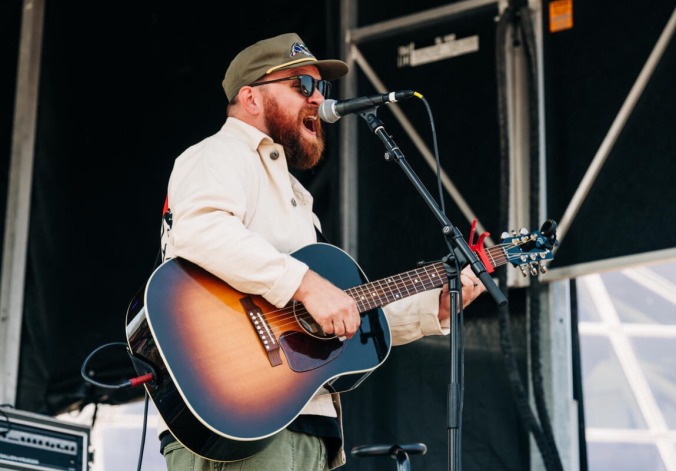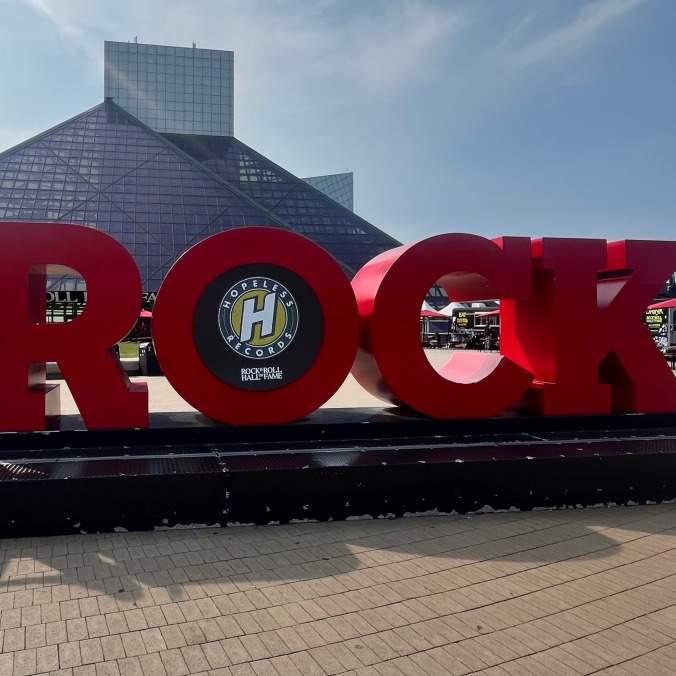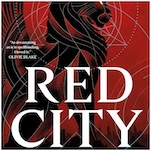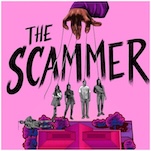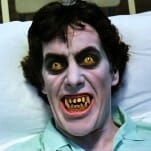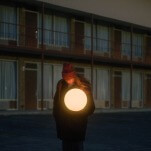Hopeless Records Celebrates a 30-Year Legacy at the Rock and Roll Hall of Fame
This past weekend, the SoCal punk, alternative, and metal label unveiled its semi-permanent exhibit in Cleveland, Ohio.
Photos by Brandy-Baye Robidoux & Amber Patrick (courtesy of the Rock and Roll Hall of Fame & Hopeless Records)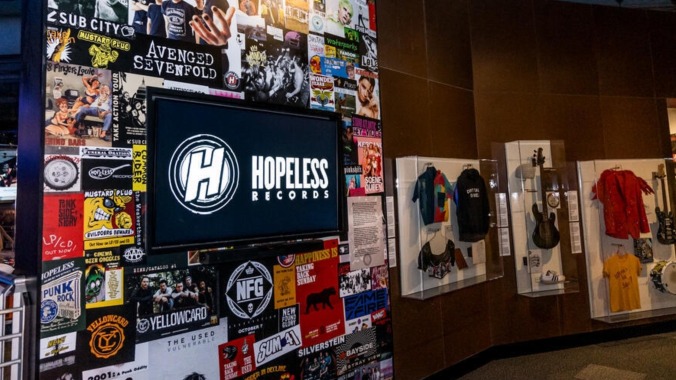
In 1993, a guy referred to as “the Paul Newman of punk rock” was just a 22-year-old college kid losing his eyesight due to retinitis pigmentosa and wanting to start a record label. Louis Posen was a music video director in Van Nuys, California at the time, working with bands like Guttermouth and NOFX. As he’s going blind, he builds Hopeless Records from the ground up, signing bands like 88 Fingers Louie, Mustard Plug, Funeral Oration and Against All Authority in the early ages of what would become—perhaps unknowingly at the time—a 30-year, still-going operation. Few independent record labels that stemmed from that period have lasted this long, as the ever-changing tides of the mainstream and its countercultural undercurrents are always morphing into beasts with a penchant for leaving good people behind. But Hopeless was never going to fall into that fate; Posen was far too passionate about the bands who’d bought into his vision.
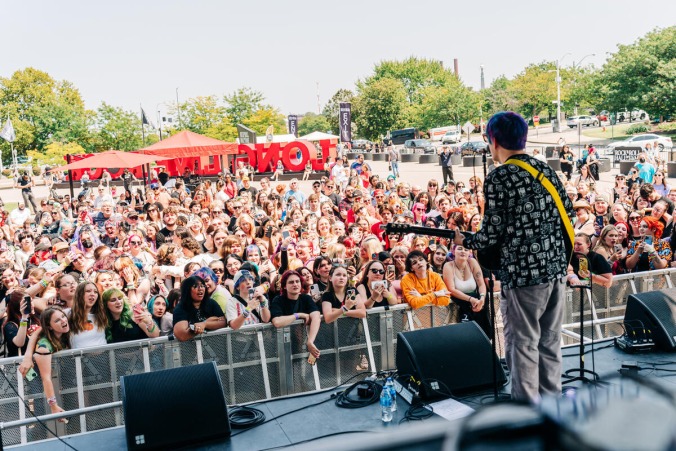
The early 2000s proved to be critical for Hopeless, as bands like Avenged Sevenfold, Thrice, Atom & His Package and Common Rider spent time on the roster and helped the label turn toward a harsher, heavier sound. The punk rock ethos of Southern California had splintered into a hardcore-leaning tint, and Hopeless had established itself as a label with the staying power to break bands and not just sign them. Cue some inclusions of ska and metal bands, and it was clear that Posen and his team was on the precipice of a massive, unprecedented breakout. And that’s exactly what the “Neon Era” was for Hopeless. The Wonder Years and All Time Low were the new kings in town, and they remain two of the greatest pop-punk/alt-rock artists working. Amber Pacific, There For Tomorrow and We Are The In Crowd were kicking around then, too, and Hopeless became the bread-and-butter, undisputed torch-bearers of scenes defined by Warped Tour and surging album sales.
The best—and my favorite—era of Hopeless happened in the mid-2010s, when the Wonder Years released the greatest pop-punk album of all time (The Greatest Generation) and the label added acts like Sum 41, Yellowcard, Taking Back Sunday, New Found Glory and Bayside to their roster. It seemed like Hopeless was doing what many labels avoided: taking post-prime bands and giving them more support. And, in a genre like pop-punk, which often has an expiration date and cycles through more presentations than any other corner of music, there’s something hopeful about that—how Posen’s urgency was rooted in stretching the elastic of timelessness and challenging cultural misconceptions about how long a band has left to go. This period of prominence led to Hopeless adding Neck Deep, Pvris, Waterparks, Destroy Boys and Scene Queen to the label and going fully global. It’s an end-cap on three decades of touted reverence for bands who might not otherwise get a shot. It’s why the Rock and Roll Hall of Fame opted to honor Hopeless Records with a special exhibition chronicling the now-31 years since Posen inked the first signing.
This past Saturday (August 24), Hopeless was officially recognized at the Rock Hall with a day-long celebration. On the museum’s fourth floor sits a string of glass cases, each filled top to bottom with artifacts collected over the decades. Old copies of Alt Press (including one from 2015 featuring the Wonder Years on it, which I made a special trip to Hot Topic to buy when it dropped), guitars, out-of-print .45s, show posters (some handmade) and mementos from the road can be spotted. There’s even a letter that Nina Bernstein, the daughter of Leonard Bernstein, sent to Posen in praise of Hopeless and their punk version of West Side Story.
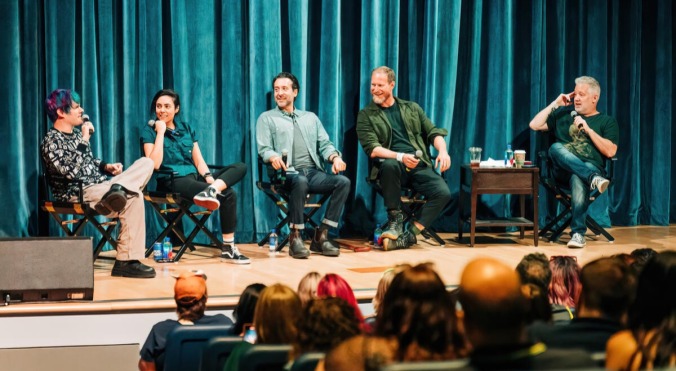
-

-

-

-

-

-

-

-

-

-

-

-

-

-

-

-

-

-

-

-

-

-

-

-

-

-

-

-

-

-

-

-

-

-

-

-

-

-

-

-

